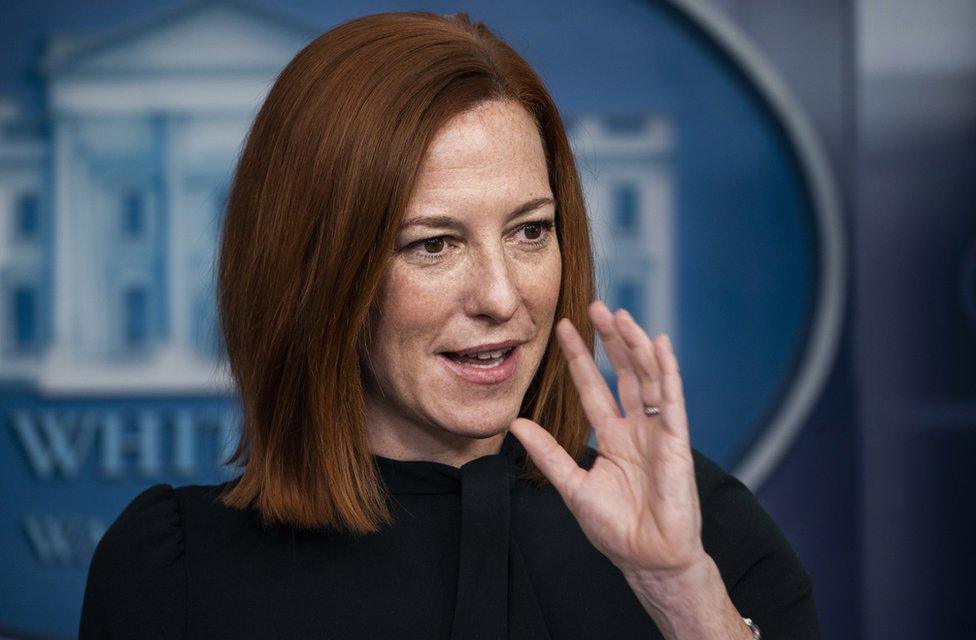Artemis: Biden administration backs US Moon shot
- Published

Artwork: Nasa wants to return to the Moon, but this time it wants to stay
President Joe Biden has endorsed the effort to return to the Moon that was initiated under his predecessor Donald Trump.
There had been speculation over the direction the new administration might take on the Artemis programme.
The plan would see the next man and the first woman land on the lunar surface in the next few years.
White House press secretary Jen Psaki confirmed the news at a briefing on Thursday.
"I'm very excited about it now - to tell my daughter all about it," Ms Psaki said, adding: "Through the Artemis programme, the United States government will work with industry and international partners to send astronauts to the surface of the Moon - another man and a woman to the Moon."
She explained that the missions would carry out "new and exciting science, prepare for future missions to Mars and demonstrate America's values."

Jen Psaki said the missions would prepare for future trips to Mars
Importantly, there was no mention of the 2024 target for the first crewed landing, a goal set by former Vice President Mike Pence.
There had long been speculation that the administration would not be tied to this date, although nothing has been said either way.
After the Moon return was announced by Mike Pence in 2017, Nasa said it would target the landing for 2028. The former vice president re-set that timeline in 2019, in a move seen as an attempt to "light a fire" under the space agency - accelerating an effort the administration thought was moving too slowly.
The 2024 date has been in doubt because of a funding shortfall for the landing element, which will carry astronauts from lunar orbit down to the surface.
The four main engines were fired in unison for the first time, but had to be shut down early
Nasa had asked for $3.3bn to fund the Human Landing System (HLS) in 2021 but received only $850m, which is likely to impact the schedule.
The other elements of the Artemis Moon architecture are the Orion spacecraft and the Space Launch System (SLS) rocket.
The Orion capsule and service module to be used on the first Artemis mission - an uncrewed loop around the Moon - are at Kennedy Space Center in Florida being prepared for a launch currently scheduled for late 2021.
The largest section of the SLS rocket that will loft Orion on this flight is currently at Stennis Space Center in Mississippi, where it will undergo another "hotfire" - in which all four engines burn for eight minutes - during the week of 21 February.

The Orion spacecraft for Artemis-1 has been undergoing preparations for launch
The previous hotfire attempt shut off after just over a minute because of a hydraulics issue.
The Orion and SLS hardware to be used on the second and third Artemis missions is currently being assembled. It is the third flight that will see humans land on the Moon for the first time since Apollo 17 in 1972.
Ms Psaki said: "To date only 12 humans have walked on the Moon - that was half a century ago. The Artemis programme, a waypoint to Mars, provides the opportunity to add numbers to that.
"Lunar exploration has broad and bicameral support in Congress."
Follow Paul on Twitter., external